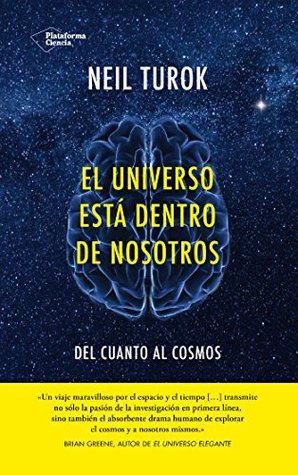
The Holographic Universe
Book Description
What if reality itself is an illusion? In "The Holographic Universe," Michael Talbot takes readers on a riveting journey through the realms of quantum physics and metaphysics, revealing a mind-bending theory that suggests our universe is a vast hologram. This provocative exploration uncovers the hidden connections between consciousness, perception, and the cosmos, challenging everything we think we know about existence. With breathtaking insights and compelling case studies, Talbot pushes the boundaries of science and spirituality, inviting us to reconsider the nature of reality. Can the universe really be a projection of our minds?
Quick Book Summary
"The Holographic Universe" by Michael Talbot challenges conventional perceptions of reality by exploring the idea that the universe operates like a giant hologram—where every part contains the whole and where distinctions between the physical and the psychic blur. Drawing on breakthroughs in quantum physics, neurology, and metaphysics, Talbot explores theories by physicists like David Bohm and Karl Pribram to suggest that the boundaries between matter, consciousness, and perception may be illusory. The book weaves in remarkable case studies from psychic phenomena and paranormal reports as evidence for the interconnectedness of all experiences. Ultimately, Talbot invites readers to reconsider their understanding of existence, proposing that reality is far more mysterious and unified than traditional science suggests.
Summary of Key Ideas
Table of Contents
The Holographic Model of Reality
Michael Talbot opens his book by introducing the concept of the universe as a hologram, inspired by the work of physicist David Bohm and neuroscientist Karl Pribram. In this model, the universe is seen as fundamentally interconnected, where every part contains the information of the whole. Talbot draws analogy to how a holographic image can be cut into pieces, and each fragment still retains the entire image, suggesting that every point in space and time might hold complete knowledge of the universe. This challenges the prevailing mechanistic-view that separates objects and events as isolated and discrete.
Consciousness and Perception as Central to Existence
A crucial idea Talbot discusses is the role of consciousness in shaping reality. He explores how perception is not a passive process but an active construction, highlighting experiments from psychology and neurology that suggest the brain itself is a kind of hologram, processing information holistically. This leads to the idea that reality, as we experience it, may be the result of consciousness interacting with a holographically encoded universe. The boundaries between mind and matter, Talbot proposes, are more fluid than traditionally believed, making consciousness a central force in the unfolding cosmos.
Quantum Physics and Nonlocality
Talbot delves into quantum physics, focusing on phenomena like nonlocality and quantum entanglement to bolster the holographic hypothesis. These puzzling effects indicate that particles can influence one another instantaneously across vast distances, defying classical explanations. Such findings, Talbot suggests, support the notion that separation in space may be an illusion, and that the universe at its core is a seamless whole governed by deeper, hidden levels of order. Quantum theory becomes a bridge linking physical reality and consciousness within the holographic paradigm.
The Parapsychological Evidence for a Holographic Universe
To further the argument, the book explores case studies from parapsychology and the paranormal. Talbot discusses phenomena such as telepathy, precognition, and psychokinesis, arguing that these occurrences make sense within a holographic framework, where information is accessible from every point within the system. He draws on real-world examples and documented accounts to suggest that extraordinary human abilities and unexplainable events are not just outliers but potential windows into the holographic nature of existence.
Implications for Spirituality and Human Potential
Finally, Talbot examines the philosophical and spiritual implications of a holographic universe. If reality is not what it appears, the way we understand our minds and potential changes too. The book suggests that human limitations may be self-imposed, and that awakening to our interconnectedness could unlock profound capacities for healing, intuition, and transformation. Talbot ends with an invitation to rethink the boundaries between science and spirituality, encouraging a more unified vision of reality that transforms both our worldview and our sense of self.
Download This Summary
Get a free PDF of this summary instantly — no email required.





